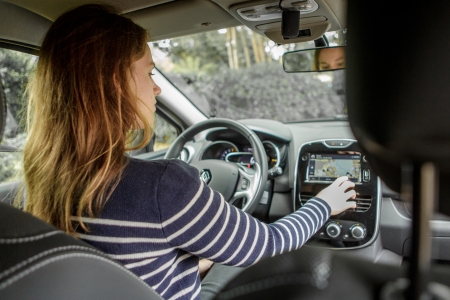Adaptive, or Advanced, Cruise Control (ACC) not only maintains a steady speed as is usual with Cruise Control, but also measures the headway or headway time to the vehicle in front. When this headway or headway time gets too short, the car itself will reduce speed. ACC may also respond to changes in headway time and calculate the so-called time-to-collision, or the time-to-collision if no actions are taken. This is, in fact, similar to the principle of a Forward Collision Warning system (FCW), different in so far as an FCW sends an alert while an ACC itself intervenes by reducing speed.
Cooperative ACC (C-ACC) implies that the car communicates with other cars and knows whether the cars in front of it are reducing speed. A major benefit is that traffic flow becomes more stable and the number of shock waves is reduced. Shock waves may lead to rear-end collisions. C-ACC is already being tested, but is not on the market yet.
ACC is a driver comfort system that in itself does not or does only slightly affect road safety. An inventory of studies into the effects of ACC shows that an unambiguous conclusion about its effectiveness cannot be arrived at [19]. A cost-benefit analysis [10] shows that the costs are expected to be higher than the benefits. It is noted, however, that this ratio may change in combination with Autonomous Emergency Brake (AEB), since a great deal of the costs will already have been made for AEB (same technology). The combination of ACC (or FCW) and AEB resulted in a major reduction (approximately 40%) in rear-end injury collisions; Solitary ACC only resulted in a reduction of PDO crashes (Property Damage Only) [7].
